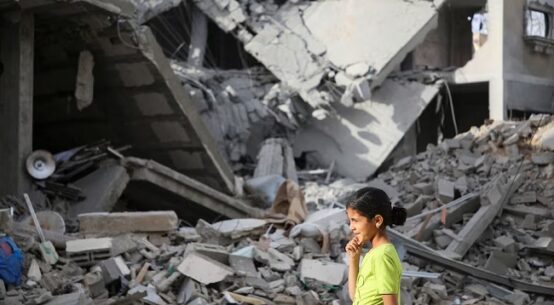
The number of people displaced by conflict, violence, persecution and human rights abuses rose for the tenth straight year in 2021 to reach the highest level since records began, according to the latest Global Trends report released Thursday by UNHCR, the UN Refugee Agency.
“Either the international community comes together to take action to address this human tragedy, resolve conflicts and find lasting solutions, or this terrible trend will continue,” said United Nations High Commissioner for Refugees, Filippo Grandi.
Since the start of this year, the Russian invasion of Ukraine has pushed the number of forcibly displaced people worldwide to over 100 million.
But according to the detailed data in the report, last year’s numbers were already at record levels.
At the end of 2021, the number of people forced to flee their homes reached 89.3 million, up 8 per cent over the year before and well over double the figure of 10 years ago.
That figure included a record 27.1 million refugees and 53.2 million internally displaced people (those who fled their homes but remained inside their country).
The number also included 4.4 million Venezuelans displaced abroad and 4.6 million asylum seekers.
Last year’s increase was fueled by new and existing emergencies, including events leading to the Taliban takeover of Afghanistan in August, which caused widespread displacement within the country and across borders.
Conflict in the Tigray region of Ethiopia forced at least 2.5 million people to flee within the country, with some 1.5 million returning to their homes later in the year.
In Myanmar, a military takeover in February 2021 caused violence that forced many to flee, while the number of Venezuelans displaced abroad grew by more than 500,000 last year.
Of the estimated 1.4 million refugees in need of resettlement in 2021 – including children and adolescents, survivors of torture and violence, and older people – 57,500 were given homes in new countries.
That was 67 per cent higher than in 2020, but still far below pre-pandemic levels and only 4 per cent of the total requiring resettlement.
Countries made some strides in integration in 2021, with an estimated 56,700 refugees from 161 different countries of origin naturalized in 23 host countries, which represented a return to pre-pandemic levels.
The number of internally displaced people (IDPs), who make up roughly 60 per cent of all those forced to flee their homes, also reached a record high last year, with Syria, Colombia, the Democratic Republic of the Congo, Yemen, Ethiopia and Afghanistan continuing to experience the highest levels of internal displacement.
In 2021, IDP returns increased to reach pre-pandemic levels, with an estimated 5.3 million people returning during the year. However, many countries – including the DRC, Cameroon, Iraq and South Sudan – saw a drop in the number of people able to go home.


